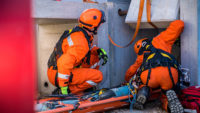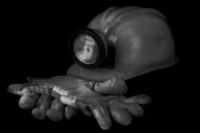 A new patent guide from the Center for Research Construction and Training ( CPWR) offers valuable information to academic researchers and others who have developed better or safer approaches to work in the construction industry.
A new patent guide from the Center for Research Construction and Training ( CPWR) offers valuable information to academic researchers and others who have developed better or safer approaches to work in the construction industry.
Developed through a cooperative agreement with the National Institute for Occupational Safety and Health (NIOSH), the guide is designed to help researchers understand the key steps and questions they should consider, and the implications of protecting -- or not protecting -- intellectual property (IP) that they develop while conducting research and developing products and materials to advance safety and health in the industry.
While the guide was developed with safety and health researchers in mind, it is also a useful resource for inventors and developers of equipment, tools, and resources designed to make construction job sites safer and healthier for workers.
An excerpt from the guide:
“During your safety and health research, you are likely to develop new ideas and, hopefully, a solution to the problem outlined in your study proposal. Oftentimes, the new development could be a new tool, modification to an existing tool, or a new method of performing a particular construction task. You may also come up with a name for the tool, modification, or technique.
“So the question to ask yourself is, ‘Should I try to protect any of this and if so how?’ The efforts to protect your intellectual property may not be trivial; obtaining a patent, for example, can cost thousands of dollars, or even tens of thousands when you add in fees for a patent lawyer. In addition, patenting a safety design might limit its use, especially if you demand too much money from manufacturers that are interested in commercializing it. Along these lines, some manufacturers are reluctant to talk to inventors with patents, or patent applications pending, for fear of having to pay royalties if they adopt the technology. Since you will determine the amount of money you demand for licensing your patented technology, however, you can control the balance of making money versus spreading your safety design throughout the construction industry. “
The guide outlines the reasons why protecting intellectual property may be advantageous for researchers, and explains the differences between:
- Patent
- Trademark
- Copyright
- License
Download a free digital copy of the guide (PDF*) or request a printed one from CPWR at news@cpwr.com or 301-495-8544.



